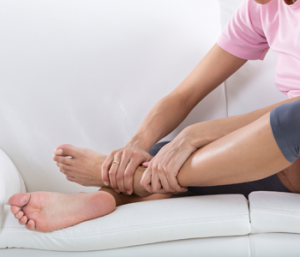
Diseased veins in the legs can undermine self-confidence due to their appearance. For some patients, they are also a source of extreme discomfort and interfere with daily activities. The most common method for treating these vessels is a procedure known as sclerotherapy. Understanding how this treatment works before undergoing it can lead to greater peace of mind.
Table of Contents
ToggleHow Does This Vein Treatment Work?
According to womenshealth.gov, up to 55 percent of women and 45 percent of men in the United States have some type of vein problem. Half of the population at least 50 years old suffers from varicose veins.
Vascular surgeons consider this treatment the preferred method for treating spider veins. They also frequently use it to treat varicose vessels.
Vein doctors perform the procedure on an outpatient basis, typically at a vein clinic. It usually does not require anesthesia. It involves injecting a specially manufactured solution known as a sclerosing agent into a targeted vein with a fine needle. This solution causes the walls of the vein to scar, then collapse, the Mayo Clinic says.
Eventually, the treated vessel closes off, causing blood to flow through neighboring veins. The treated vein gradually fades as the body absorbs it, according to the University of Chicago Medicine. Results become visible over a period of several weeks to several months, depending upon the size of the vein.
During this procedure, patients lie on the back with legs elevated slightly. After injecting the sclerosing agent, the physician applies compression and massages the area.
Although this vein treatment is highly successful, it cannot prevent the development of new spider or varicose veins. For this reason, some patients undergo periodic treatment. Some veins also require more than one injection. Most physicians advise waiting four to six weeks before undergoing another treatment.
Spider veins are much closer than varicose veins to the surface of the skin. For deeper veins, doctors might use ultrasound imaging to guide the needle used to inject the sclerosing agent.
Aftercare
After the procedure, patients rest for around 20 minutes. It is necessary to wear a compression stocking on the treated leg, usually for several weeks.
Patients must have another adult drive them home. In most cases, individuals are able to resume normal routines right away but must avoid strenuous activities for about two weeks. Vein specialists also caution patients to keep the treated area out of the sun for a few weeks in order to avoid developing dark spots on the skin.
Use of a sclerosing agent to eliminate unwanted veins is considered a fairly safe procedure with relatively few complications. The most common potential temporary side effects include bruising, small skin sores, darkened skin that appears as spots or lines, raised areas that look red, and multiple tiny red blood vessels.
